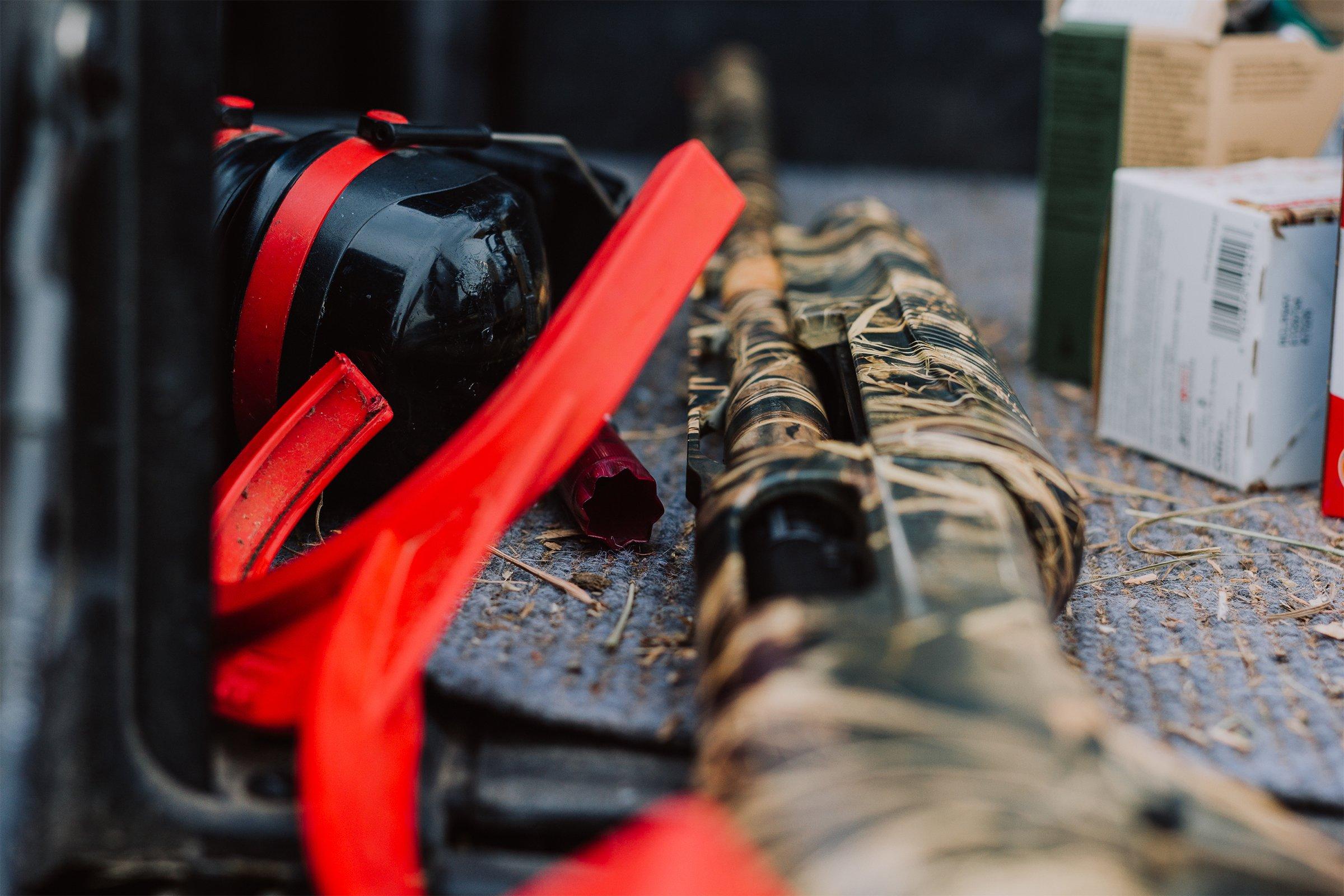Practice on These Clay-Target Stations to Sharpen Your Game
If you're like me, you might feel somewhat insecure about your shooting before the waterfowling game gets real. Off-season practice is great, after all, but bringing down twisting feathered rockets can present a new challenge.
This year, tailor your last-minute practice by incorporating shots from several clay-target games. These targets represent common duck and goose shots you'll see during the season, so focusing on the sight pictures and follow-through required will hone your practical skills. One caveat, though: Start with your gun no higher than port arms. You don't get to pre-mount your gun in the marsh. Shouldering your shotgun swiftly and precisely is a major component of good wing-shooting.
Trap, Stations 1 through 5 (16- or 27-Yard Line)
Almost everyone has shot a few rounds of trap, and it's considered a fairly basic shotgunning game. However, these easy targets replicate the straightaway and quartering-away flush of a duck. Really concentrate on keeping your head down, and follow through aggressively on those hard rights and lefts.
Skeet, Stations 3, 4 and 5, High and Low Birds
These swift crossing targets build wing-shooters. To consistently smash these clays, you must position your feet correctly, swing hard through or ahead of the target and keep that gun moving. If you get lazy, you'll miss. And trust me, you'll see a pile of similar shots in fall, from early teal seasons to screaming bluebills in November.
Springing Teal, Sporting Clays
That description covers a broad range of rising targets, from relatively low and lazy to ridiculously fast and high. Shoot both, but focus on the fast, high risers. As the name implies, those birds really replicate the jet-like ascent of spooked greenwings. Approach these shots as you would a crossing shot: Get aggressive, and keep that gun moving.
Overhead Dove, Sporting Clays
As with springing teal targets, this shot varies from course to course. Some places zip clays low and fast over your head. Others float them higher and slower. Both have merit, as they represent a common overhead duck or goose shot. Match your barrel speed to that of the bird, and swing your gun gracefully through the target. Don't get lulled to sleep by seemingly slow birds.
Descending Incomers, Sporting Clays
These targets take many forms. It's only important that they're coming at you and losing altitude, much like a decoying duck or goose. No, they're not difficult, but some folks miss these surprisingly frequently. Keep your cheek glued to the stock, and remember that you still have to lead those seemingly lazy, motionless birds.
Skeet Station 2, High Bird, or Come-From-Behind Sporting Clays Targets
To me this is the toughest waterfowling shot; a bird that flies from behind you and zips away. It can be tough to gauge the proper lead on these targets, so I often shoot behind or underneath them. The high bird on skeet Station 2 was my nemesis for years.
But it shouldn't be that tough. Your natural hand-eye coordination will tell you when to slap the trigger. Just keep the gun moving, and shoot the bird sooner than later, as the target doesn't get easier as it gets farther away.
Six for Success
Shoot a few of these targets the week before your duck season starts. The extra practice might not let you make you a world-class shooter, but it will increase the number of ducks in your boat and keep your empty-shell count down.
Click here for more Realtree waterfowl hunting content. And check us out on Facebook.







